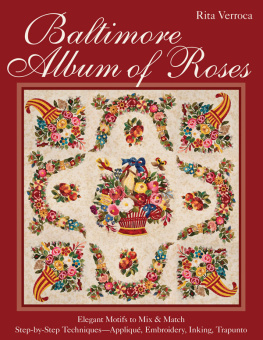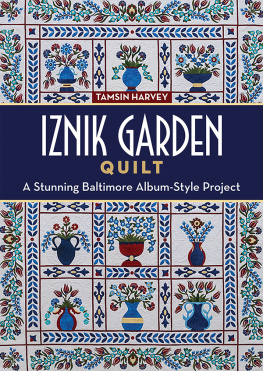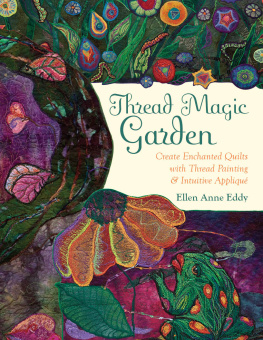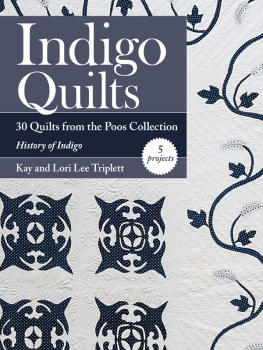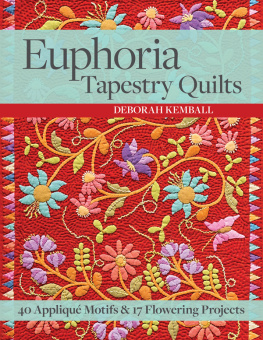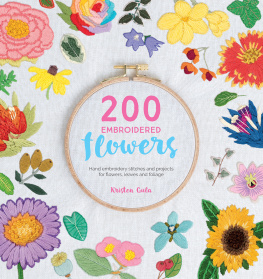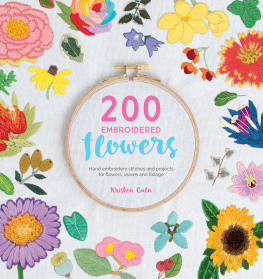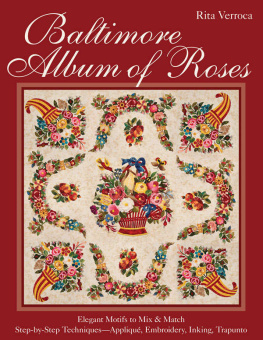Publisher: Amy Marson
Creative Director: Gailen Runge
Art Director / Cover Designer: Kristy Zacharias
Editor: Lee Jonsson
Technical Editors: Susan Hendrickson and Debbie Rodgers
Book Designer: Christina Jarumay Fox
Production Coordinator: Zinnia Heinzmann
Production Editor: Joanna Burgarino
Illustrator: Aliza Shalit
Photo Assistant: Mary Peyton Peppo
Instructional and quilt photography by Stevie Verroca, unless otherwise noted; additional quilt photography by Diane Pedersen on pages 9, 17, 70, 78, 82, and 89
Published by C&T Publishing, Inc., P.O. Box 1456, Lafayette, CA 94549
Acknowledgments
Thank you to my loving husband, Steve. I cherish all the support, love and encouragement you have always given me.
Thank you to my wonderful daughters, Stevie and Jessie, who are a great source of pride and constant inspiration. I love you.
A special thanks to my daughter Stevie, who contributed to the book. I am in awe of your work and forever grateful for your patience and exquisite help.
To my friend Sue Messina: thank you for your love, friendship, and generosity.
To all my friends from Ritas ClubMary Beals, Kathryn Bernstein, Susan Bradshaw, Nadine Cassady, Nancy Chesney-Smith, Barbara Dahl, Mary Fischel, Sue Flynn, Donna Garrity, Ellen Heck, Jessica LaMar, Gladys Lee, Alice Loui, Margaret Russell, Ann Rust, Doreen Smith, Madeline Swope, Edna Tanita, and Roz Thebaudthank you for your friendship. You keep me in stitches, sew it seams.
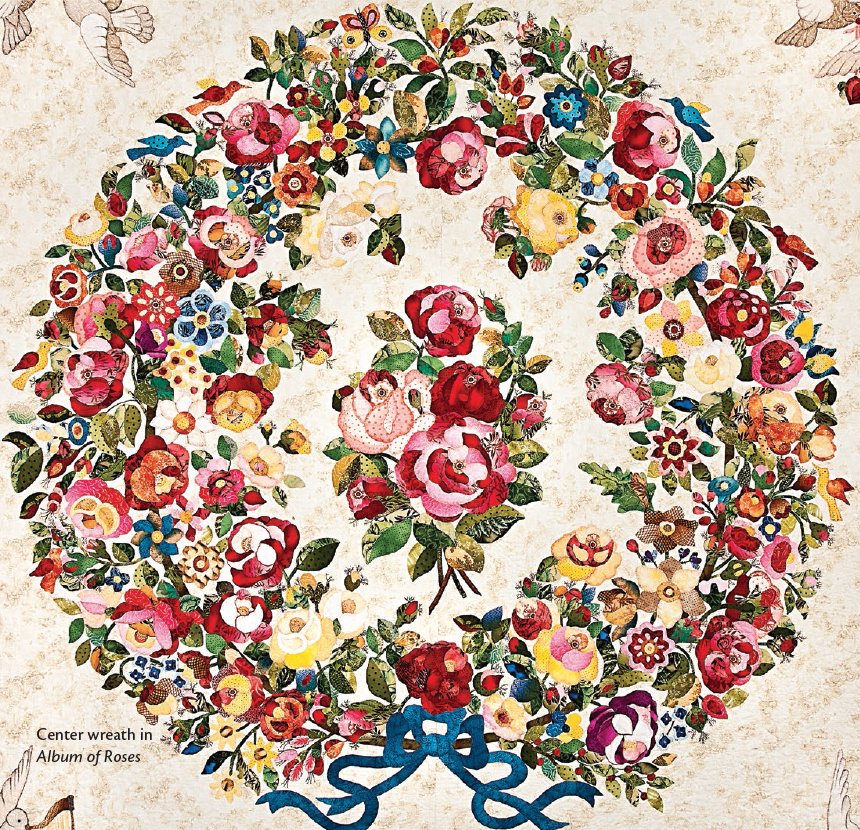
Center wreath in
Dedication
I DEDICATE THIS BOOK TO ALL QUILTMAKERS FROM LONG AGO. THEIR INSPIRING QUILTS ARE SHINING EXAMPLES OF FRIENDSHIP, LOVE, AND PATRIOTISM AND CONVEY TO US A SENSE OF PURPOSE AND BELONGING.
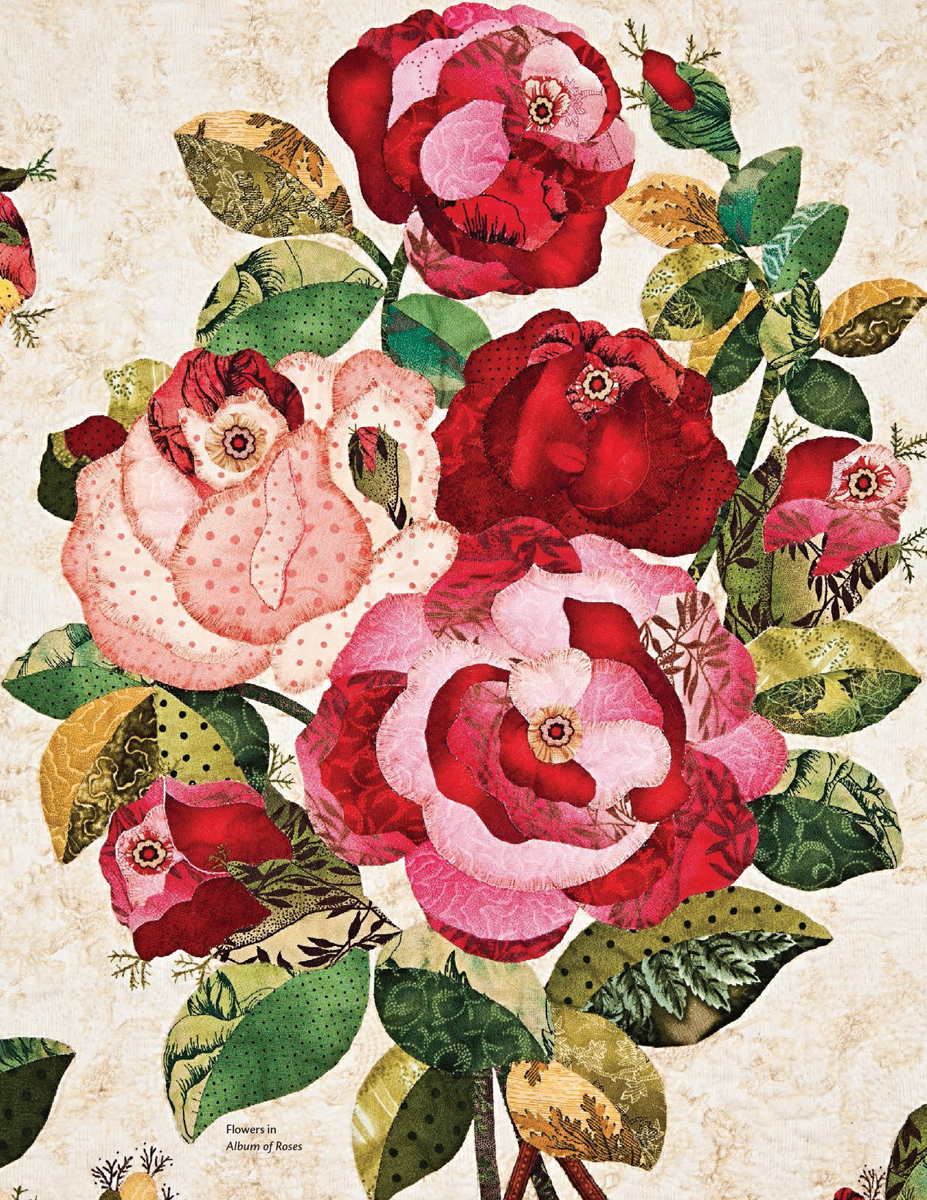
Flowers in


T he history and development of appliqu in America during the 19th century in Baltimore, Maryland, is fascinating and intriguing. Between 1840 and 1852, Baltimore was the second-largest city in America. It was a rich and flourishing city, buzzing with excitement. Trade ships from all over the world made it to American shores, and those vessels brought, among other goods, many fabrics that were exquisite in color, design, and texture. British chintzes, inspired by Indian palampores, depicted flowers in baskets and bouquets, cornucopias filled with fruits, colorful birds, and butterflies of every species. Lively trade brought beautiful cottons, ombrs, and rainbow fabrics from France and England in stunning hues of red, gold, blue, brown, and green, which quilters used to create spectacular examples of appliqu art. Pride, prosperity, happiness, excitement, and the assurance of a better future were reflected in the quilts from this prosperous era, and it is no wonder these quilts inspire us to this day.
BALTIMORE BLOCKS

Since the first Baltimore Album quilts appeared, almost two centuries ago, quilters have been fascinated by these quilts. Often referred to as the Queen of Quilts, the Baltimore Album quilt has for many decades inspired quilters to recreate these beautiful designs. Trying to replicate the original patterns, fabrics, colors, and textures as closely as possible, todays quilters connect to the past, unveiling and sharing the significance and mystery that surround each block. The early Baltimore Album quiltmakers chose their fabrics with great care and executed the handwork with skillful precision. The blocks they designed and stitched represented their pride, love, ideals, and opinions, leaving us with a vivid account of their place in history. Because we have no written documentation about these blocks, we can only guess what the makers were thinking when they stitched these beautiful appliqu blocks. But it is this mystery that adds interest and romance to these intriguing handmade treasures.
The beautiful blocks we study in this chapter are authentic Baltimore Album blocks, drawn out as patterns by Elly Sienkiewicz in her book Spoken Without a Word, unless otheriwse indicated. As noted, many of my students stitched blocks for me, and these blocks are now featured in the Rita Verroca Friendship Quilt.
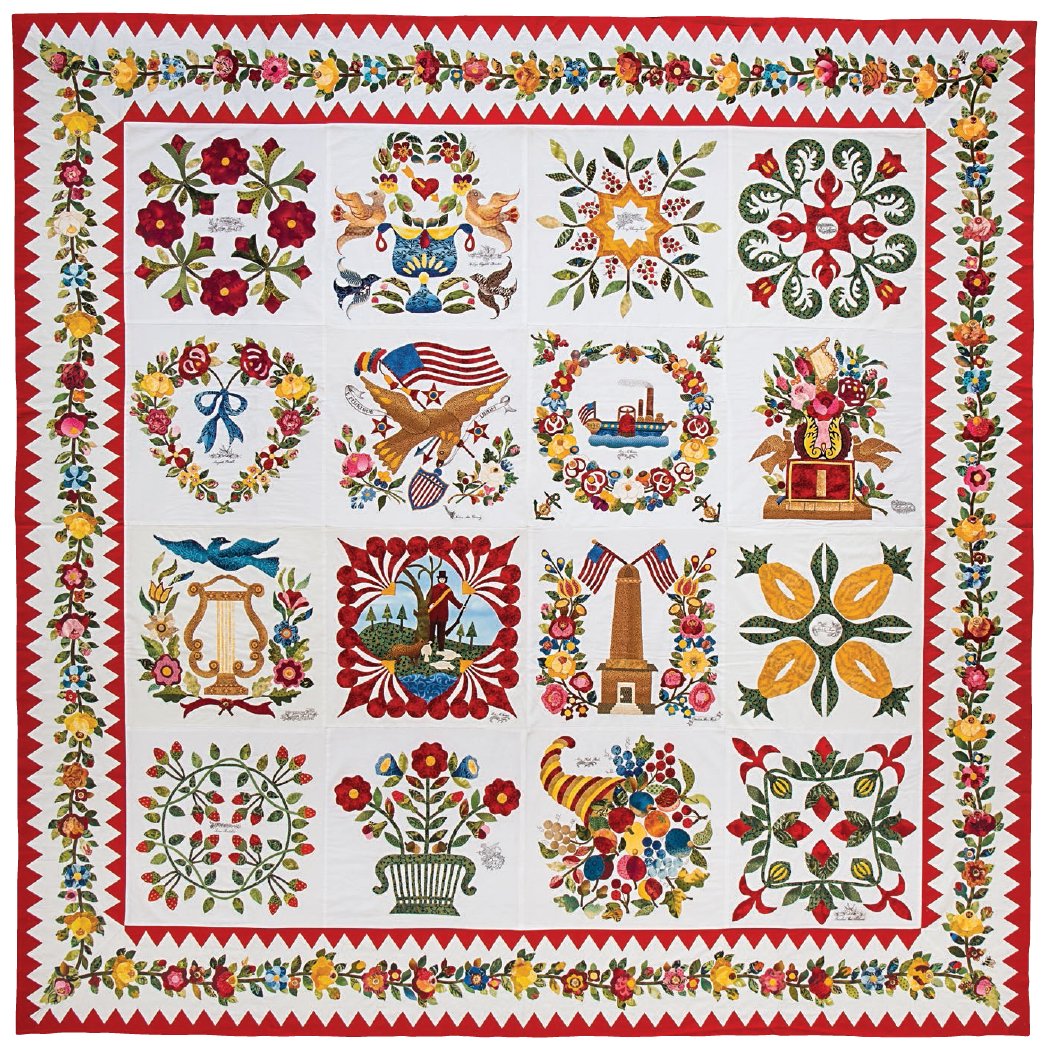
Friendship Quilt designed by Rita Verroca, border designed and stitched by Rita Verroca
At the beginning of the 19th century, the newly erected George Washington Monument and the Battle Monument, honoring the fallen of the War of 1812, were the pride of Baltimore.
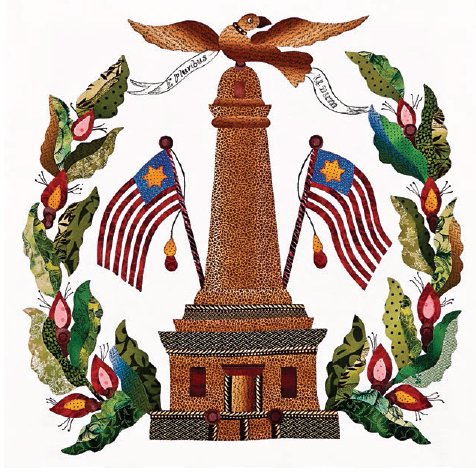
George Washington Monument, 18 18, pattern drafted and stitched by Rita Verroca
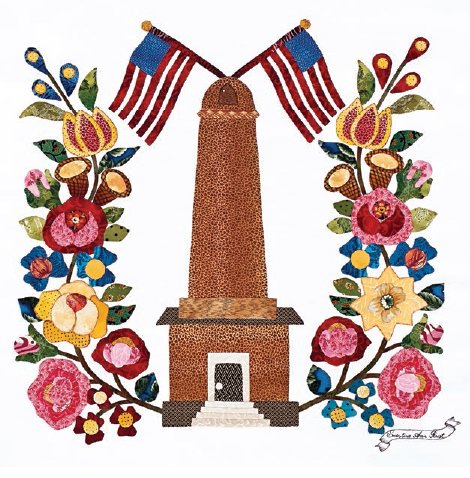
George Washington Monument, 18 18, stitched by Ann Rust
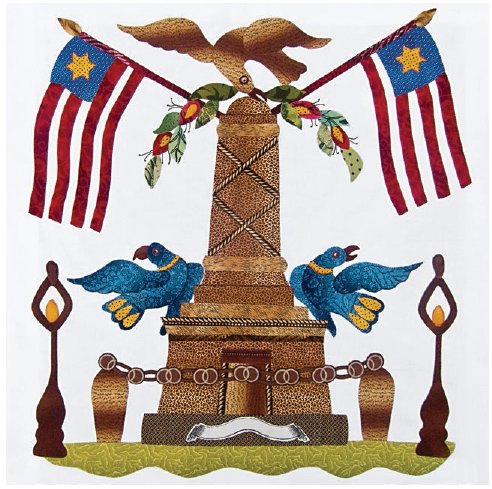
Battle Monument, 18 18, pattern drafted and stitched by Rita Verroca
Whose house was the Maryland Manor House? Was it the house of a prominent resident of the city or a city official? Does the eagle that hovers over the house symbolize an important event that occurred in this snapshot of the past? We can only guess.
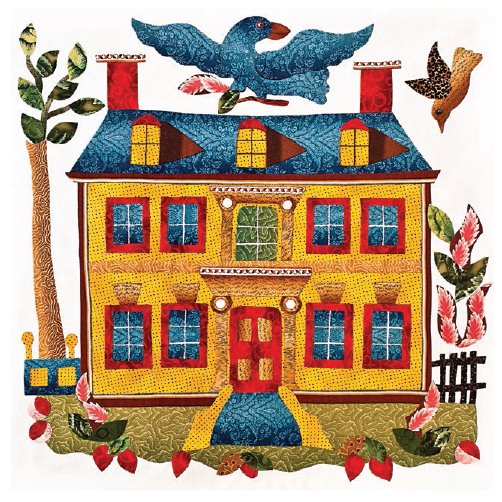
Maryland Manor House, 18 18, pattern drafted and stitched by Rita Verroca
The eagle proudly displayed with an open flag showed the love, pride, and devotion women felt for their newly freed country.
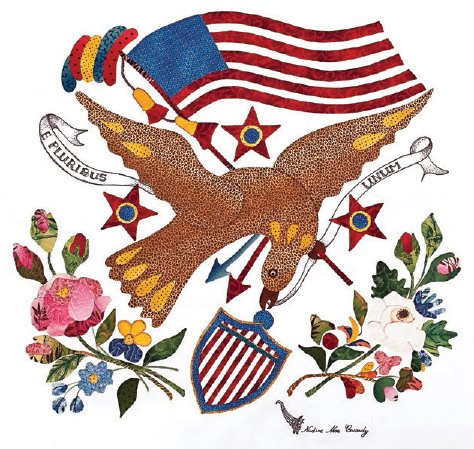
Eagle, 18 18, stitched by Nadine Cassady
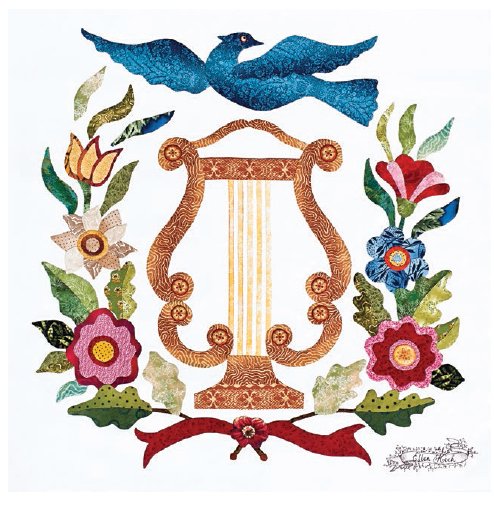
Eagle and Harp, 18 18, stitched by Ellen Heck
This block, featuring a ship in a wreath of flowers, could have been made to honor a sea captain or to celebrate the newly invented steamship. Because Baltimore was a large mariners city, either could have been the case.
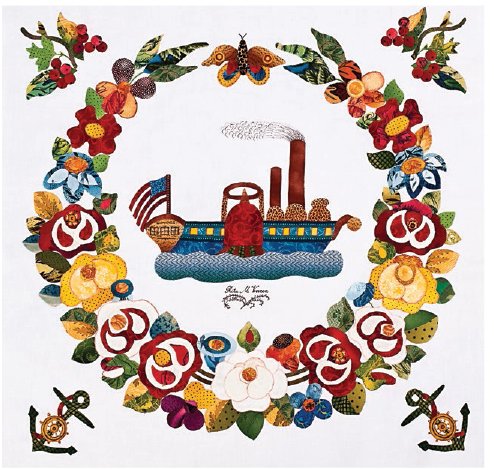
Steamship, 18 18, stitched by Rita Verroca
Does the Hunting Scene block depict the duck-shooting club at Carrolls Island, a famous club that was still in existence nearly a century later? One might think so, as the block shows water, white fowl, and a retrieverpossibly the famous Chesapeake Bay dog, said to be a cross between a spaniel and an otter.
Next page
